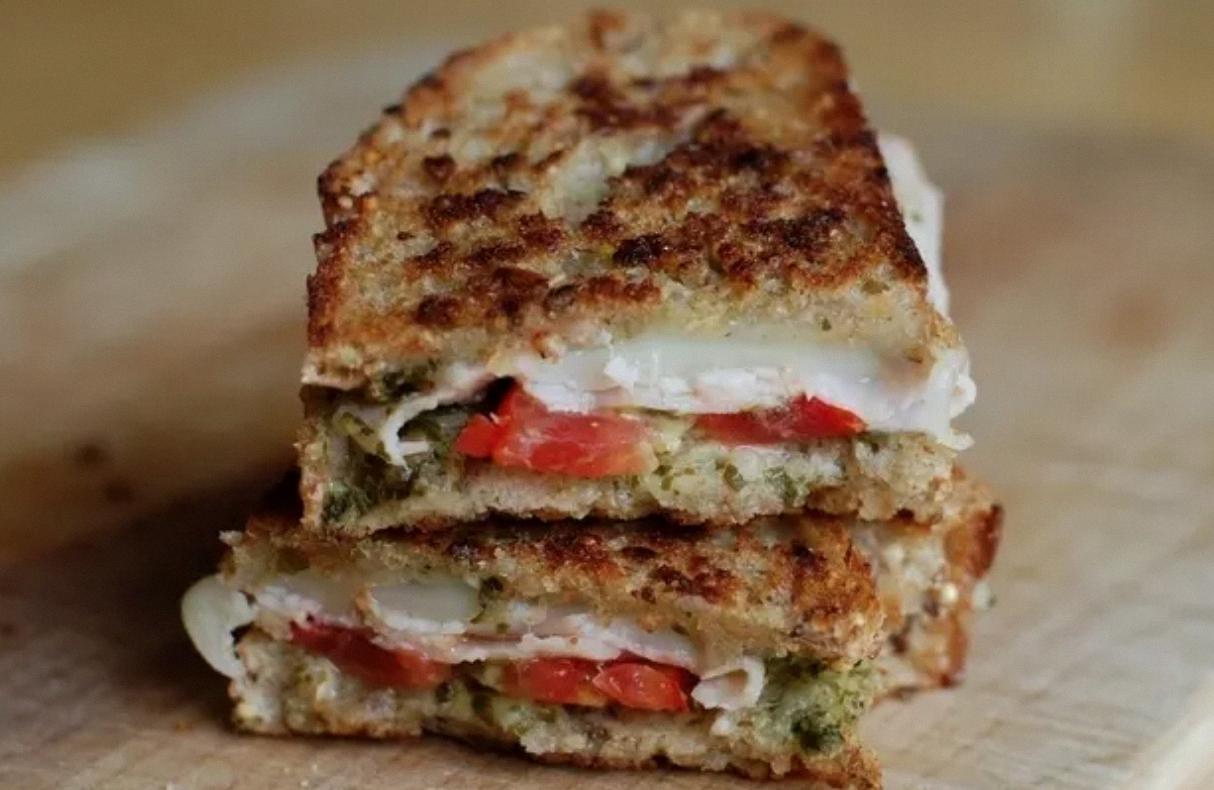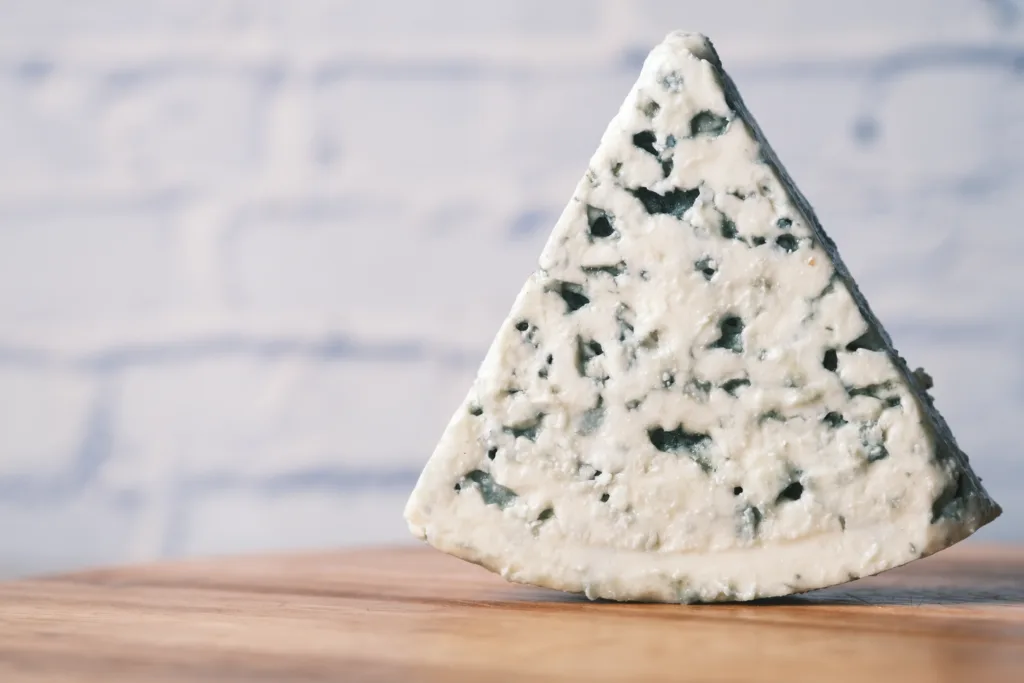Feta cheese is knwn for its bold and tangy flavor, making it a popular choice for salads, sandwiches, and even pasta dishes. However, one question that often pops up is whether feta cheese melts or not. The short answer is no, feta cheese does not melt like other cheeses. But, let’s dive deeper into why that is.
Firstly, it’s essential to understand that not all cheeses are created equal. Different types of cheese have varying levels of moisture, acidity, and fat content, which all affect how they behave when heated. Feta cheese, in particular, has a high acidity level and moisture content, which makes it challenging to melt.
When heated, feta cheese will soften and become creamy, but it won’t melt in the way that mozzarella or cheddar does. Instead, it will retain its crumbly texture, and you’ll end up with chunks of chewy cheese on your dish. This texture can be a desirable characteristic in some dishes, such as Greek-style pizzas or baked pasta dishes.
The high acidity level in feta cheese also plays a role in its non-melting behavior. The acidity causes the cheese to break down and release its moisture, which prevents it from forming a cohesive, melted mass. This is why you’ll often see feta cheese crumbled on top of dishes instead of melted into them.
If you’re looking to make a sauce or dip with feta cheese, there are still options available to you. You can heat the cheese gently over low heat and mix it with other ingredients like cream or butter to create a creamy, tangy sauce. Alternatively, you can use feta cheese as a topping or garnish for your dish, and let its unique texture and flavor shine through.
Feta cheese does not melt like other types of cheese due to its high acidity and moisture content. While this may be a drawback in some dishes, it’s also what makes feta cheese unique and versatile. Whether you’re crumbing it on top of a salad or mixing it into a dip, feta cheese’s bold flavor and crumbly texture are sure to make any dish stand out.
Can Feta Cheese Be Melted in a Sauce?
Feta cheese can melt in a sauce. While it may not melt in the same way as other cheeses like cheddar or mozzarella, its soft and crumbly texture allows it to melt easily when heated. When used in a sauce, feta will become soft and creamy, adding a tangy and bold flavor to the dish. However, it is important to note that feta may not produce a completely smooth texture in a sauce, as it may still retain some of its crumbly texture.

Source: willmakeagain.com
Can Feta Cheese Be Melted in an Oven?
Feta cheese does not melt in the oven in the same way that oter cheeses, such as mozzarella or cheddar, do. When heated, feta cheese will not become stringy and gooey, but it will soften and become creamy. This is because feta cheese has a high salt content and a low moisture content, which makes it resistant to melting. However, when heated, feta cheese will become more pliable and will spread and blend with other ingredients in a dish. When using feta cheese in the oven, it is important to keep an eye on it to ensure that it does not burn or become too dry.
Does Feta Cheese Melt When Put On Pizza?
Feta cheese is not known to melt like other types of cheese such as mozzarella or cheddar. This is because feta cheese has a lower melting point due to its high salt content and crumbly texture. When feta cheese is heated, it softens but does not melt into a gooey consistency like other cheeses do. Therefore, if you choose to use feta cheese on your pizza, you can expect to have small chunks of cheese on top that will retain teir shape and texture even after baking. This unique texture adds an interesting dimension to the pizza and can be a delicious alternative to traditional melted cheese options.
Melting Point of Feta Cheese
Feta cheese does not actually melt, regardless of the temperature it is exposed to. This is because feta cheese has a high acidity and moisture content, which prevents it from melting like other cheeses. Even when heated, feta cheese may become softer and slightly creamy, but it will not melt into a liquid form. Instead, it may brown or develop a crispy crust when exposed to high temperatures for an extended period of time. Therefore, if you are looking for a cheese that will melt, feta is not the best option.
The Melting of Feta Cheese: Investigating the Causes
Feta cheese is known for its crumbly texture and tangy flavor, but it can be frustrating when it unexpectedly melts. There are a few potential reasons for this. Firstly, the feta cheese may have a higher moisture content than desired. When heated, this excess moisture can cause the cheese to melt and lose its shape. Secondly, the pH level of the cheese may be too high, indicating a lack of acidity. This can cause calcium to leech out of the cheese, resulting in a slimy, melted texture. To prevent feta cheese from melting, it is important to ensure it has a low moisture content and a proper pH level. Additionally, it shuld be heated gently and for a short amount of time to avoid excessive melting.

Can Feta Cheese Be Melted in a Pan?
Feta cheese will not melt in a pan. Feta is a non-melting cheese because it has a high acidity and low moisture content which makes it resistant to melting. This means that when you cook feta in a pan, it will not turn into a gooey mess like other cheeses do. Instead, it will retain its shape and texture while bcoming warm and slightly softened. This makes feta cheese a great ingredient for dishes like baked feta pasta, Greek salads, and frittatas, where you want the cheese to hold its shape and not melt all over the place. So, if you’re looking for a cheese that will keep its texture and shape when cooked in a pan, feta is definitely the way to go.
Types of Cheese That Do Not Melt When Heated
There is a family of semi-firm cheeses that do not melt when heated. These cheeses include queso panela, queso fresco, paneer, halloumi, feta, cotija, ricotta, and soft goat cheese. These cheeses have a low melting point and high moisture content, which means that they can withstand direct or indirect heat in your kitchen without melting.
Queso panela and queso fresco are Mexican cheeses that are commonly used in dishes like quesadillas and enchiladas. Paneer is a cheese commonly used in Indian cuisine, particularly in dishes like palak paneer and butter chicken. Halloumi is a cheese from Cyprus that is often grilled or fried and served as a main dish or appetizer. Feta and cotija are crumbly cheeses that are often used as toppings for salads and tacos. Ricotta and soft goat cheese are often used in baked dishes like lasagna and quiches.
These semi-firm cheeses are versatile and flavorful, making them a popular choice for many different types of cuisine. They may not melt like traditional cheeses, but they offer a unique texture and taste that can elevate any dish.
Can You Eat Feta Cheese Raw?
Feta cheese can be eaten raw. In fact, it is a common practice to consume feta cheese without cooking it. Feta cheese is a type of cheese that is typically made from sheep’s milk or a combination of sheep’s and goat’s milk. It has a crumbly texture and a tangy, salty taste that makes it a popular addition to many dishes. When consumed raw, feta cheese is usualy crumbled or sliced and added to salads, sandwiches, and other dishes. It can also be mixed into dips and spreads. However, it is important to note that some people may have an allergic reaction to feta cheese or may be lactose intolerant, so they should avoid consuming it. Additionally, pregnant women are advised to avoid consuming feta cheese that is made from unpasteurized milk to reduce the risk of contracting harmful bacteria.
Cheeses Not Suitable for Melting
There are several types of cheese that are not ideal for melting due to their unique composition and properties. These include varieties such as halloumi, kasseri, manouri, queso blanco, and paneer. Unlike cheeses like cheddar, Swiss, and Gruyere, these cheeses do not melt in the traditional sense. When heated, they may soften slightly and become creamier, but they do not fully melt and lose their shape. This makes them better suited for dishes where they can be sauteed, pan-fried, or grilled, rather than melted. So, if you’re looking to create a dish that requires melted cheese, it’s best to avoid these non-melting varieties and opt for a cheese that will melt and blend well with other ingredients.

The Effects of Heating Feta Cheese
When you heat up feta cheese, it undergoes a significant texture change. The cheese becomes soft and creamy, but it will not liquify. Rather, the curds of the cheese will maintain teir shape. This change in texture occurs due to the high acid content of feta cheese and the process used to make it. Feta cheese is made by curdling milk with rennet or an acid, which results in a crumbly texture. When heated, the curds of the cheese start to break down and become more spreadable. However, the cheese will not melt like other types of cheese due to its low moisture content. heating up feta cheese can enhance its flavor and texture, making it a delicious addition to many dishes.
Heating Feta Cheese: Is it a Good Idea?
You can heat feta cheese. In fact, quality feta can be heated in various ways to enhance its flavor and texture. Frying feta and drizzling it with warmed honey is a popular way to enjoy it as an appetizer. Baking it in a high-heated oven until tender and perfectly creamy is another way to enjoy it. You can also use heated feta cheese in various dishes like pasta, salads, and sandwiches. However, it is important to note that not all types of feta cheese are suitable for heating. Some feta cheese may become crumbly and lose their flavor when heated. Therefore, it is recommended to use quality feta cheese and follow the apropriate heating method for the best results.
Can Feta Cheese Be Used As A Substitute For Mozzarella?
You can use feta cheese instead of mozzarella, but it’s important to note that feta has a tangier taste and a crumbly texture, which may not work well in all recipes. Feta cheese is also typically higher in sodium and lower in moisture content when compared to mozzarella. If you’re planning to use feta as a substitute for mozzarella, it’s best to cosider the recipe you’re making and make adjustments accordingly. For example, feta may work well as a substitute for mozzarella on salads, in Mediterranean-style dishes, or in certain types of pasta dishes. However, it may not be the best choice for recipes that require a cheese that melts easily, such as pizza or lasagna. Ultimately, the choice of which cheese to use will depend on the flavor and texture you’re looking for in your dish.
Which Type of Feta Cheese Melts Best?
When it comes to melting feta, it’s important to choose the riht type of cheese. Feta made from sheep’s milk is the best option for melting, specifically the soft blocks that come in brine. This type of feta has a creamy texture that allows it to melt smoothly and evenly, creating a rich and luxurious sauce. It’s important to avoid feta made from cow’s milk as it tends to be too firm and crumbly, making it difficult to melt. So, if your recipe calls for melted feta, be sure to choose a soft, sheep’s milk variety for the best results.

Which Cheese Melts Best?
When it comes to melting cheese, some varieties are better than others. Generally, the best melting cheeses are thoe that have a high moisture and fat content, as these factors contribute to the cheese’s ability to melt smoothly and evenly. Here’s our top 10 list of cheeses that are the absolute best for melting:
1. Colby – an all-American cheese, Colby is firm but mild-flavored and creamy
2. Havarti – a Danish cheese that’s creamy, buttery, and melts easily
3. Swiss – a nutty, sweet cheese that melts evenly and smoothly
4. Fontina – an Italian cheese that’s semi-soft and melts into a rich, creamy texture
5. Monterey Jack – a mild, versatile cheese that’s perfect for melting in dishes like quesadillas and nachos
6. Muenster – a mild, buttery cheese that melts easily and adds great flavor to sandwiches and burgers
7. Provolone – an Italian cheese that’s mild and slightly tangy, and melts into a smooth, creamy texture
8. Smoked Gouda – a Dutch cheese that’s rich, smoky, and melts beautifully in dishes like mac and cheese and grilled cheese sandwiches
9. Cheddar – a classic cheese that’s sharp and flavorful, and melts well in dishes like casseroles and soups
10. Gruyere – a Swiss cheese that’s nutty and slightly sweet, and melts smoothly and evenly.
When it comes to using these cheeses in recipes, the possibilities are endless. Some of our favorite dishes to make with these melting cheeses include grilled cheese sandwiches, mac and cheese, quesadillas, nachos, casseroles, and pizzas. So whether you’re looking for a smooth, creamy texture or a rich, flavorful taste, these cheeses are sure to deliver.
Why Feta Cheese Does Not Melt in the Oven
Feta cheese is known for its crumbly texture and tangy flavor, and one of its unique characteristics is that it does not melt easily. This is becuse feta has a low moisture content and a high acid content compared to other cheeses like cheddar or mozzarella. When cheese melts, the proteins break down and the fats begin to liquify. However, in the case of feta, the high acid content curdles the proteins and prevents them from melting properly. This is why feta cheese will retain its shape and texture even when exposed to high temperatures in the oven. So, if you were wondering why your feta cheese did not melt in the oven, the answer lies in its unique composition of low moisture and high acid content.
Conclusion
Feta cheese is a delicious and versatile cheese that can be used in a variety of dishes. Although it does not melt in the same way as other cheeses, such as mozzarella or cheddar, it still softens and becmes creamy when heated. This is because feta has a high acidity and moisture level, which affects its melting properties. When using feta in recipes that call for melted cheese, it’s important to keep in mind that the texture and consistency will be different than what you may be used to. However, the bold, tangy flavor of feta is worth experimenting with in your favorite dishes, whether melted or not.
